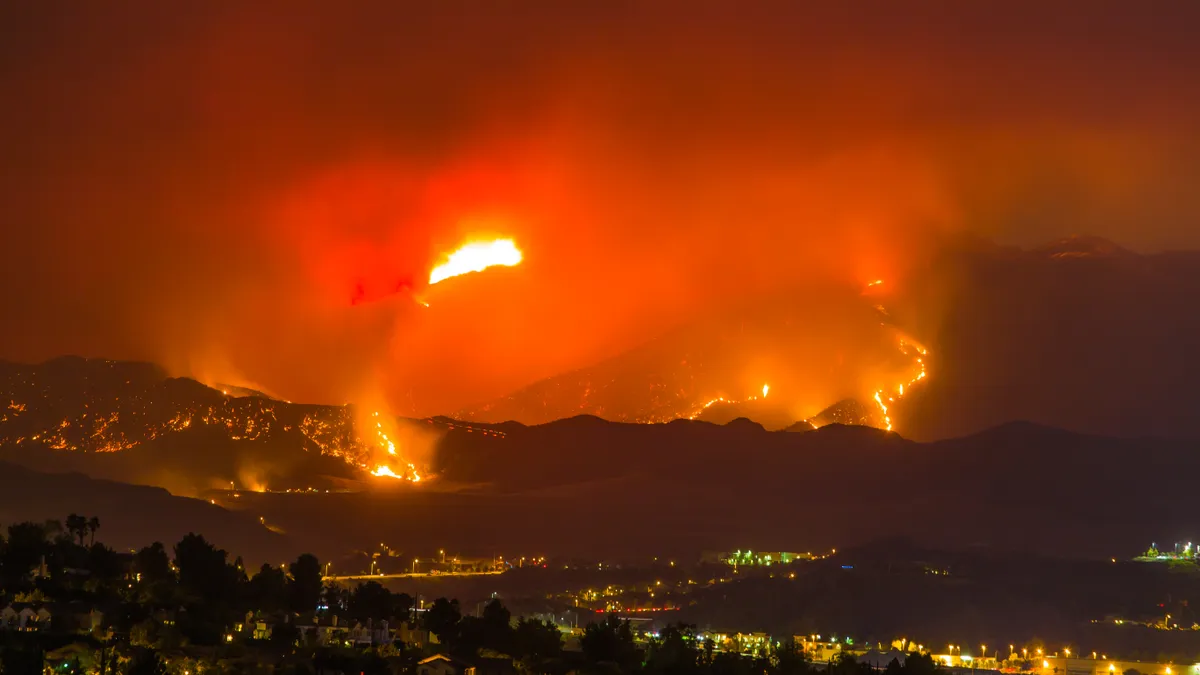Dive Brief:
- A federal judge is considering new probation terms for Pacific Gas & Electric that the utility claims could cost up to $150 billion to implement, and which a U.S. attorney on the case warns could interfere with federal efforts to ensure safety on the company's electric grid.
- U.S. District Judge William Alsup oversees the utility's probation related to the deadly San Bruno, California, gas pipeline explosion in 2010. On Jan. 9, he proposed new terms to address wildfire risk, including a reinspection of PG&E's electric grid, vegetation management and other fixes.
- The utility is expected to file for bankruptcy on Jan. 29 related to mounting wildfire liability, and told the judge that it does not have the funds or resources to take on the proposed conditions.
Dive Insight:
PG&E faces unheaval on a number of fronts — from an impending bankruptcy to regulatory oversight and legal jeopardy — but on Wednesday, it got help from an unexpected source.
U.S. Attorney Hallie Hoffman told the U.S. District Court for the Northern District of California that the federal government "does not believe the record supports imposition of the proposed conditions as they are currently drafted," adding that "as drafted, the Court's proposed conditions may overlap with state and federal regulations."
PG&E told Alsup "the proposal is not feasible," and estimated it would need to remove more than 100 million trees to meet the judge's specifications. To do so by a June 21 deadline would require the labor of more than 650,000 full-time employees.
"PG&E does not believe that it could assemble a workforce of such magnitude," the utility said. "Moreover, even if qualified personnel existed, the other resources do not. PG&E estimates that the cost of full compliance with the order might approach between $75 billion to $150 billion, and PG&E does not have the ability to raise those funds."
Alsup had proposed three new conditions on PG&E's probation:
- Requiring PG&E to re-inspect its entire electrical grid, perform vegetation management and fix certain conductors, poles, transformers, fuses and other equipment.
- Requiring PG&E to document the inspections and improvements.
- Allowing PG&E to supply electricity only through the parts of its grid it has determined to be safe.
The judge's Jan. 9 proposal said PG&E "must de-energize any part of its grid not yet rated as safe by PG&E for the wind conditions then prevailing until those conditions have subsided. ... In determining safety, PG&E may not take into account the need for reliability of service, the inconvenience to customers resulting from interruption in service, or its impact upon PG&E's revenues and profits."
PG&E on Monday filed an 8-K with the Securities and Exchange Commission, informing regulators it had secured financing to continue operating while a Chapter 11 bankruptcy case proceeds. But the case is shaping up to be complex, and the utility has said it expects the bankruptcy will take "approximately two years," while making provisions if it goes longer.















